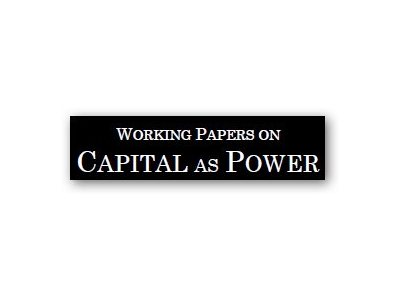The Growth of US Top Income Inequality: A Hierarchical Redistribution Hypothesis
Fix, Blair.
(2018).
Working Papers on Capital as Power. No. 2018/05. July. pp. 1-56.
(Article - Working Paper; English).
![[thumbnail of 20180700_fix_the_growth_of_top_us_income_inequality_wpcasp_front.jpg]](/547/1.hassmallThumbnailVersion/20180700_fix_the_growth_of_top_us_income_inequality_wpcasp_front.jpg)  Preview |
Cover Image
20180700_fix_the_growth_of_top_us_income_inequality_wpcasp_front.jpg Download (8kB) | Preview |
Preview |
PDF (Full Text)
20180700_fix_the_growth_of_top_us_income_inequality_wpcasp.pdf Download (21MB) | Preview |
Alternative Locations
http://www.capitalaspower.com/2018/07/2018-05-fix-the-growth-of-us-top-income-inequality/, https://www.econstor.eu/handle/10419/181037
Abstract or Brief Description
What accounts for the growth of US top income inequality? This paper proposes a hierarchical redistribution hypothesis. The idea is that US firms have systematically redistributed income to the top of the corporate hierarchy. I test this hypothesis using a large-scale hierarchy model of the US private sector. My method is to vary the rate that income scales with hierarchical rank within modeled firms. I find that this model is able to reproduce four intercorrelated US trends: (1) the growth of the top 1% income share; (2) the growth of the CEO pay ratio; (3) the growth of the dividend share of national income; and (4) the ‘fattening’ of the entire income distribution tail. This result supports the hierarchical redistribution hypothesis. It is also consistent with the available empirical evidence on within-firm income redistribution.
Language
EnglishPublication Type
Article - Working PaperKeywords
functional income distribution hierarchy inequality personal income distribution power top income shareSubject
BN MethodologyBN Power
BN Region - North America
BN Business Enterprise
BN Data & Statistics
BN Distribution
BN Industrial Organization
BN Institutions
Depositing User
Jonathan NitzanDate Deposited
02 Aug 2018 22:28Last Modified
11 Aug 2018 00:12URL:
https://bnarchives.net/id/eprint/547Actions (login required)
 |
View Item |
